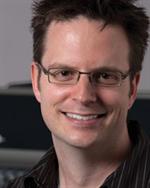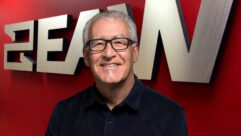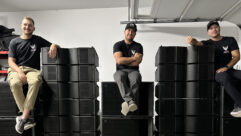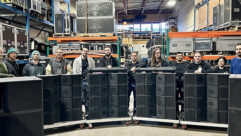

Sheldon Radford, Digidesign, on Live Sound
Radford is Digidesign’s senior product manager for live sound. He leads a team that is responsible for the Venue Profile console and Mix Rack system. He’s worked in product development and design in the pro audio industry for ten years and has been mixing live sound for 18.
Sam Berkow is the founding partner of SIA Acoustics, an acoustical design firm with offices in New York and Hollywood, Calif.
Quick bio: Radford is Digidesign’s senior product manager for live sound. He leads a team that is responsible for the Venue Profile console and Mix Rack system. He’s worked in product development and design in the pro audio industry for ten years and has been mixing live sound for 18.
Sheldon Radford
Sam: Digidesign is best known as a company that serves the digital recording market. Did you have to alter your view of product design to address live sound?
Radford: Absolutely, and it was a major undertaking. There’s no second take at a live show and you can’t ask 20,000 people to take a coffee break while the system reboots, so many of our solutions needed to be architected from scratch to suit the live environment. It wasn’t a case of repurposing existing software code and hardware–it was a ground-up effort that led to some real innovations, such as the ability to reset the system without disrupting audio or plug-ins, while still maintaining mixing control.
Sam: The Venue consoles are the first to bring fully realized, plug-in technology to live sound. Does this present challenges for you as a designer? For example, do you need to test various plug-ins for stability? Does allowing third-party software into the desks risk instability?
Radford: There is some overhead in opening up a platform to third parties, but it’s been well worth it in order to have all of the rich plug-ins to offer. We do extensive testing of plug-ins and work closely with developers during their alpha and beta development phases in order to ensure their plug-ins are stable and fully integrated with our consoles. Since these same plug-ins run on Pro Tools, all of the testing done by the Pro Tools team also applies, as does the experience and feedback of the large Pro Tools user base. As a further protective measure, the Venue D-Show software runs plug-ins in their own shell environment, which means that even if a rogue plug-in were to sneak through testing and have an issue during a show, it wouldn’t take out the core mixing functions or disrupt control.
Sam: Digital snakes seem to be an area where live sound has been struggling to find a standard–or even a willing supplier. The Venue consoles initially shipped with a fully integrated digital snake. Did that present a specific design challenge? Do you anticipate that we will see a network-style snake in live sound any time soon?
Radford: It wasn’t our original intent to design our own snake system, but eight years ago when the Venue system was being developed, there weren’t many other viable choices. Ethernet solutions such as CobraNet and EtherSound were neither cost-effective nor robust enough for live sound. MADI also appeared to be on the decline, but that’s since turned around in a big way. We chose to develop our own low latency, fully redundant digital snake system, which has worked out well.
It’s clear that the audio industry is accelerating towards an exciting, networked future, yet still hasn’t converged on a single solution, or even two, or three. In fact, there are more protocols than ever. A clear winner needs to emerge in order to ensure widespread adoption and to really realize networking’s promise of distributed audio, control, and interoperability. We’re keeping a close eye on networking trends, including the emerging Ethernet AVB standard (see “What’s New Is Old,” Tools & Tech, May 2009), and will support the technologies that best serve our customers’ needs.
Sam: The “sound” of a digital console has become less of an issue in recent years. We put a Venue console beside several well known analog desks and there were differences in the sound, but no one thought the digital desk was substantially deficient. How has digital sound developed so well? Is this an A/D, DSP, or other issue?
Radford: There’s no single thing that makes a digital console sound great; it has to be the sum of the parts. On a digital console, these parts include a solid preamp design, A/D and D/A stages, and the quality of the internal mixing and processing. We’ve been doing digital hardware, mixing, and signal processing for over twenty years, and all this experience was brought to bear to ensure everything from the front-end, through the channel-strip processing (EQ, dynamics), to the output stage was of high quality. Plug-ins are then the icing on the cake, with all of their own unique flavors and sounds.
Sam: Have you heard your desks in many live show. More importantly, have you seen any shows where you don’t care about the desk and want to focus on the show?
Radford: All of us on the live sound team get out to as many shows as possible and talk to the engineers. That’s a big part of our job, and what a great perk! A superb show pulls you in and makes you forget all about the gear. Whether I’m behind the console mixing or in the crowd as a fan, I still love that nervous energy you get at the top of a show.
Sam Berkow










